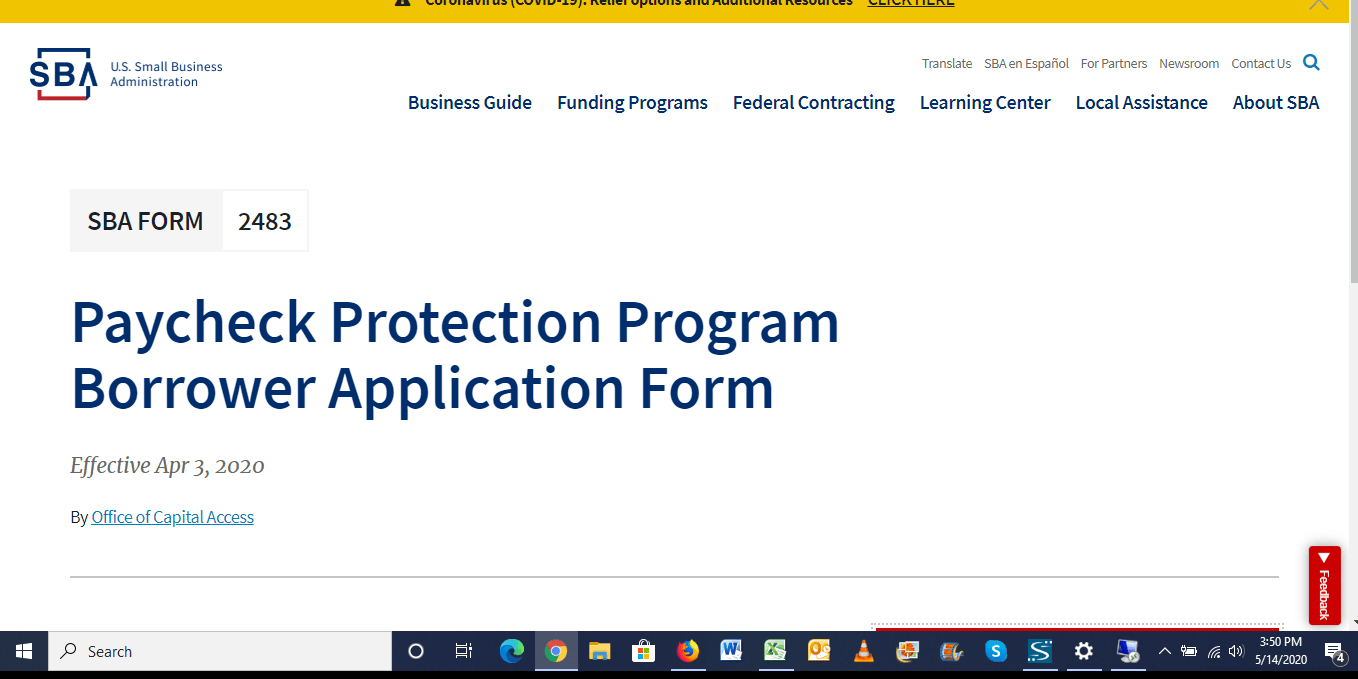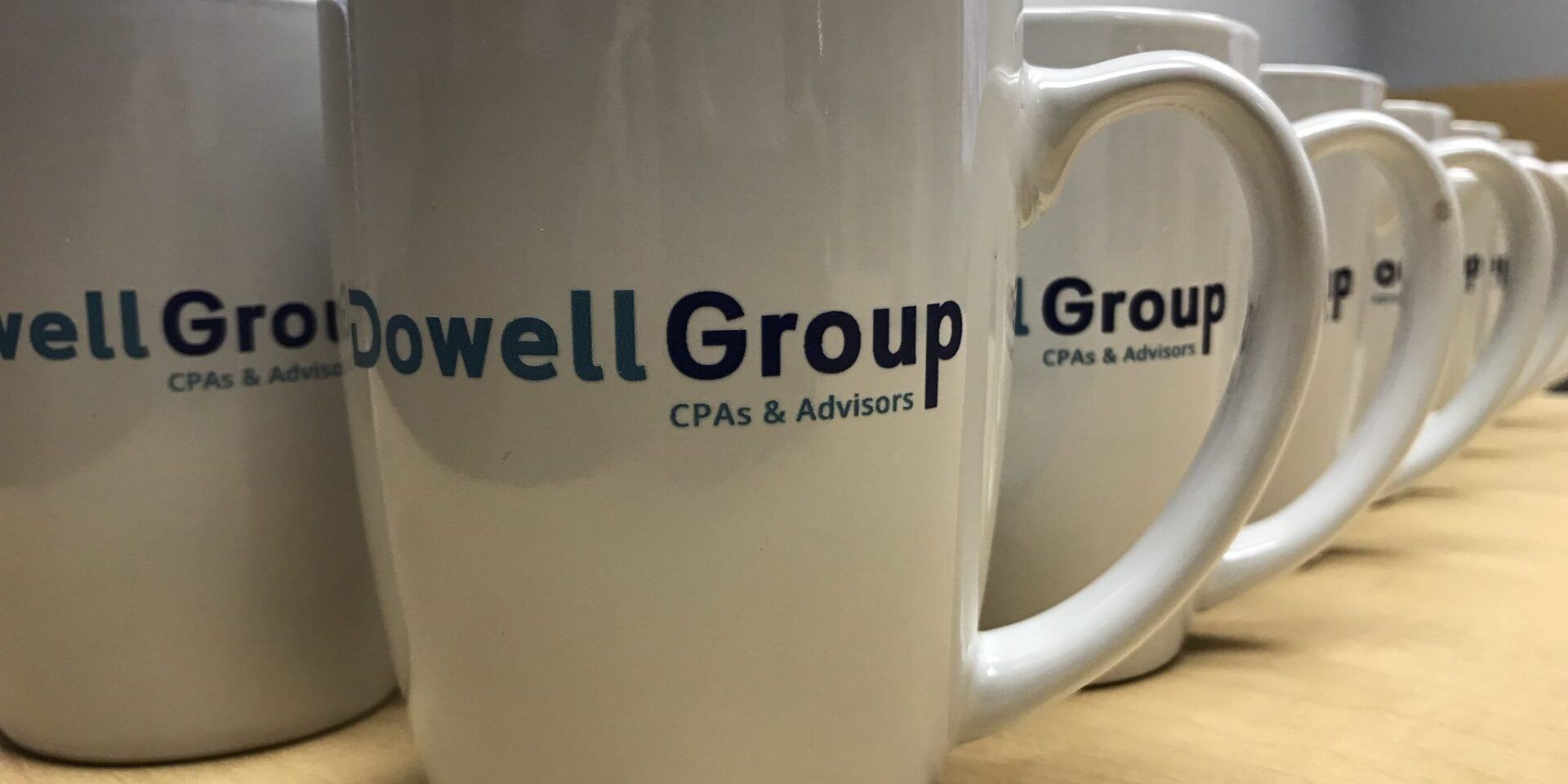Nonprofit
Nonprofit

By Greg Dowell
•
20 Dec, 2021
The IRS recently released Notice 2022-03, which provides the optional 2022 standard mileage rates for taxpayers. These rates are used to compute the deductible costs of operating an automobile for business, charitable, medical or moving expense purposes. In addition, the notice also provides the amount taxpayers must use to calculate reductions to basis for depreciation taken under the business standard mileage rate, and the maximum standard automobile cost that may be sued in computing the allowance under a fixed and variable rate plan (FAVR). The standard mileage rate for 2022 is $.585 per mile for business use. The standard mileage rate is $.14 per mile for charitable purposes (unchanged from 2021), when rendering services to a charitable organization. For medical purposes, the standard mileage rate is $.18 per mile (an increase of $.02 from 2021). Note that this same $.18 rate is used for moving expenses, but the moving expense deduction is suspended by TCJA for tax years before January 1, 2026, except for members of the Armed Forces. Taxpayers may choose to calculate the actual costs of using their vehicle rather than using the standard mileage rates. If a standard mileage rate is initially used for business purposes, a taxpayer can choose either the standard mileage rate or actual expenses in later years. In the case of a leased vehicle, if the standard mileage is used in the initial year, it must be used for the entire lease period. For autos used for business, the part of the business standard mileage rate treated as depreciation is $.26 per mile for 2022 (it was also $.26 per mile for 2021). For purposes of computing the allowance under a FAVR plan in 2022, the standard auto cost may not exceed $56,100 (includes autos, trucks, and vans). For purposes of the fleet-average valuation rule and the vehicle cents per mile valuation rule, the maximum FMV of autos (including trucks and vans) first made available to employees in calendar year 2022 is $56,100.

By Gregory S. Dowell
•
29 Oct, 2020
October 8, 2020 by Gregory S. Dowell The SBA and the US Treasury announced today that they were releasing a simplified loan forgiveness application for the Paycheck Protection Program Loans of $50,000 or less. The intent is to minimize the burden on small businesses that the Program puts on the smallest of businesses. From the Secretary of the US Treasury, Steven T. Mnuchin: “The PPP has provided 5.2 million loans worth $525 billion to American small businesses, providing critical economic relief and supporting more than 51 million jobs. Today’s action streamlines the forgiveness process for PPP borrowers with loans of $50,000 or less and thousands of PPP lenders who worked around the clock to process loans quickly, We are committed to making the PPP forgiveness process as simple as possible while also protecting against fraud and misuse of funds. We continue to favor additional legislation to further simplify the forgiveness process." The forgiveness application for loans of $50,000 or less is made on form 3508S. The form is one page and requires a small amount of data, with an additional optional page that transmits demographic information. Three pages of instructions are provided separately. While there is a small amount of data to input and no documentation to attach and submit, the SBA also states that they reserve the right to inspect documentation, if necessary. This effort by the SBA and Treasury follows months of complaints and concerns that the SBA/Treasury was not doing enough to alleviate the burdens of the smallest of businesses that benefited from the PPPL. Many tax professionals continue to anticipate that this is not the last word on the matter, and that the forgiveness process may be further simplified in the weeks ahead. Given that possibility, it may be worthwhile to hold off on making any such application for the immediate few weeks.

31 Mar, 2020
by Gregory S. Dowell March 31, 2020 Important Information for Business Owners and Nonprofits The Coronavirus Aid, Relief, and Economic Security Act (CARES) that was passed into law over the past weekend contains provisions that affect income taxes for individuals and businesses, as well as paid leave and unemployment benefits. CARES also included $350 billion to help small businesses (including self-employed persons and nonprofits) maintain their payrolls. Known as the Paycheck Protection Program , these loans are backed by the Federal government and may be forgiven if the borrowers maintain their payrolls and meet other criteria. This update is going to address only the loan provision under the Paycheck Protection Program. Key attributes of the Paycheck Protection Program are: Small business or nonprofit (501 (c)(3)) with fewer than 500 employees (500 employees includes full-time and part-time); includes all affiliates, subsidiaries, and businesses under common control; exceptions apply for businesses in the food service sector, franchises, and SBIC-financed businesses Self-employed individual carrying on a trade or business These loans go up to 10 years, with up to 6 to 12 months of forbearance at the outset Maximum loan amounts are the lesser of $10 million or 2.5 times the average monthly payroll for the 12 months preceding the loan funding Payroll compensation includes tips, medical insurance costs, paid leave, severance, retirement plan contributions, and state and local employment taxes Payroll calculations can include leased employees Individual employee compensation is limited to $100,000 per year All payment obligations must have been in existence prior to 2-15-20 No personal guarantees required for these loans Loan forgiveness is also included: Amounts eligible to be forgiven are amounts spent on payroll, mortgage interest, rent, utilities, and interest on other debt obligations. Loan will be fully forgiven to the extent it is expended during the first 8 weeks following funding (but cannot go beyond 6-30-20), if average number of employees is not changed from the average number of employees from 2-15-19 to 6-30-19 or from 1-1-20 to 2-29-20. No employee may have their compensation reduced during the period by more than 25% Violations of either of the above will result in a proportionate amount of the loan remaining outstanding and the remainder being forgiven. If employees separated between 2-15-20 and 4-27-20 but are rehired by 6-30-20, they will be treated as having been employed throughout the period. Forgiven loan is not taxable for Federal income tax purposes. If any part of the loan is forgiven, employer is not eligible for 2-year deferral of employer’s share of Social Security taxes. The portion not forgiven will be repayable over a maximum of 10 years, with interest capped at 4%. Paycheck Protection loans are administered by the Small Business Administration (SBA). The applications for these loans have not been finalized; the expected date of the application’s availability is April 10th or slightly sooner. The loans may be applied for directly through a bank qualified as an SBA lender or through the SBA. We have been advised that, due to the expected volume of applications, banks may likely only process loans of existing customers at first. We further hear that banks may limit the initial loan to just the forgivable amounts for each borrower, and presumably will circle back around to address other borrowing needs as soon thereafter as possible. While the applications are not available yet, we advise businesses and nonprofits to begin compiling all of the necessary documents that the SBA will require as soon as possible, which would include documents to verify: Number of employees as of 2/15/2020. Payroll information from 2019 and projected May 2020 and June 2020 (more guidance to come on acceptable formats) Documentation on leases, mortgages, and utilities: Copies of lease agreements Copies of mortgages Evidence of payment amounts and balances due on mortgages and leases Utility bills for 2019 to present (electric, gas, water, transportation, telephone, internet) Certification from a representative of the business or organization who is authorized to certify that the document provided is true and correct and that the amount being forgiven was used in accordance with the program’s guidelines for use. Current 2020 financial statements 2019 financial statements 2019 (if filed), 2018, 2017, and 2016 tax returns Proof of liability insurance Copies of organizational documents, including: Bylaws (for a Corporation); Operating Agreement (for an LLC) Articles of Incorporation (for a Corporation); Articles of Organization (for an LLC) The situation is fluid and it is important to act quickly. The best thing that can be done at this time is to gather documents.

31 Mar, 2020
The landscape is changing furiously with regard to the Paycheck Protection Program loans, which are the forgivable loans that will be in hot demand. The U.S. Treasury has released information today, which included the application that will be used, along with a list of information for borrowers and lenders. Here are the links that you should be able to cut and paste into your browser: Application: https://home.treasury.gov/system/files/136/Paycheck-Protection-Program-Application-3-30-2020-v3.pdf Borrowers Information: https://home.treasury.gov/system/files/136/PPP%20Borrower%20Information%20Fact%20Sheet.pdf Lenders Information: https://home.treasury.gov/system/files/136/PPP%20Lender%20Information%20Fact%20Sheet.pdf To the detriment of many, many businesses, not all banks are included as lenders at the outset. SBA lenders will be the first place that the Treasury looks to, and their clients will have the smoothest path forward. Other banks are presumably scrambling to get into line, as the Treasury has included provisions to allow other lenders to participate, but they have to apply and receive some level of certification. Best thing businesses and nonprofits can do is to check with their banks to see if they are SBA lenders.

25 Jun, 2019
June 25, 2019 By Gregory S. Dowell To gain the designation as a public charity that is exempt under Internal Revenue Code Section 501(c)(3), tax-exempt organizations must pay attention to the need to benefit the general public, rather than just a few individuals. 501(c)(3) organizations are those organizations that are exempt from Federal income tax because they are organized and operated exclusively for charitable, religious, or educational purposes. To qualify, none of the organization’s earnings can inure to the benefit of a private shareholder or individual. I n a Private Letter Ruling (PLR 201923026) recently released, the IRS denied exempt status to an organization that it deemed was serving only a select few individuals, rather than the general public. In this case, an organization was formed to host a fundraiser for five orphaned siblings. These five siblings were orphaned when their parents died within one year of each other. The intent was that the fundraiser would raise enough resources to help offset some of the living expenses of the children. An exempt organization was formed, with the underlying organizational document limiting its purpose to the exempt purposes found under Internal Revenue Code Section 501(c)(3). On the application form seeking exempt status that was prepared and submitted to the IRS, the organization specifically stated that it would not further non-exempt purposes, such as those that are conducted for the benefit of private individuals. In its review, the IRS concluded that the organization was formed to benefit the five orphans exclusively, rather than the general public. Given the facts in this case, it was relatively easy for the IRS to note the obvious, which was that the beneficiaries were all from the same family and were predetermined. Accordingly, the IRS deemed that the organization was formed and operated to serve only private, rather than public, purposes. The IRS denied the application for exempt status that was filed. While this private letter ruling relates to a relatively small organization that was making an application to be exempt, existing and larger organizations would be wise to understand the fundamental principal involved, which is that the organization can not be in the business of benefiting only specific individuals. Failure to do so could put the organization’s tax-exempt status in jeopardy.

01 Oct, 2018
by Gary Lasker October 1, 2018 I ntroduction The new revenue recognition standard will become effective for most entities in 2019. This new standard created a totally new accounting model for recognizing revenue. Its purpose is to standardize the way entities recognize revenue. Some entities may have insignificant changes as a result of this new standard while other entities may end up with a large impact upon adoption. However, almost all entities will have to deal with additional disclosure requirements. Significant Changes There are some major changes between current accounting guidance and the new guidance. For instance, revenue is currently recognized when the transfer of risks and rewards of ownership occurs either at a point in time or over time. The new standard replaces this risk and rewards model with various transfer of control scenarios as the gauge to determine when revenue should be recognized. Another big change is the modification of the unit of accounting grouping used to account for revenue recognition. Units of account under which a transaction price and hence revenue are determined will be known as performance obligations. Performance obligations are analogous to deliverables or elements of a contract. Under the new revenue recognition standard, performance obligations may differ from the units of account used currently to account for and recognize revenue. Consequently, this could impact the amount and timing of revenue recognition which can affect key performance measures such as bank loan covenant ratios. Multiple performance obligations included in a contract will not be that unusual with the new separate unit of accounting criteria. As a final point, one of the pillars of revenue recognition in current revenue guidance is that the seller’s price to the customer is fixed or determinable. The new standard changes this by allowing for variable consideration which can accelerate revenue recognition in some circumstances. Five-Step Revenue Recognition Model The fundamental principle of the new standard is that an entity should recognize revenue to depict the transfer of promised goods and services to customers in an amount that reflects the consideration (payment) to which the entity expects to be entitled in exchange for those goods or services. To carry out this objective, the standard created a five-step model for most entities to follow when recognizing revenue: Identify the contract or contracts with the customer. Identify the performance obligations in the contract. Determine the transaction price. Allocate the transaction price to the performance obligations in the contract. Recognize revenue when or as the entity satisfies a performance obligation. Given the above framework, let us begin a brief review of the five-step process. Step 1 – Identify the contract or contracts with the customer The term contract, as defined by the Financial Accounting Standards Board, is an agreement between two or more parties that creates enforceable rights and obligations. The contracts can be written, oral, or electronically produced. Agreements do not have to be in writing to be considered a contract in the context of the pronouncement. The parties must have approved the contract and be committed to perform their acknowledged obligations. Step 2 – Identify the performance obligations in the contract Performance obligations are analogous to deliverables, elements, or components of a contract in the present guidance. Performance obligations are essentially what the entity is doing to earn the revenue. All arrangements will need to be analyzed to determine the goods and/or services the entity promises to transfer to a customer. An identification of all distinct performance obligations in an arrangement is a requirement in this step. In many cases, contracts will have more identified performance obligations that would be accounted for separately than under the existing revenue recognition rules. Step 3 – Determine the transaction price The transaction price is the amount of consideration (for example, payment) the entity expects to be entitled to for transferring the promised goods and services to its customers, excluding amounts collected on behalf of third parties. The transaction price could be fixed, variable, or even a combination of both. When the promised amount of consideration is variable, the transaction price is estimated using either the expected value method or the most likely amount method depending on which estimate is the better predictor of the consideration to which the seller is entitled. These methods provide estimates of the transaction price the entity would expect to receive. The amount of the resulting transaction price estimate should be only to the extent that it would be probable that a significant reversal of this estimate would not occur after the uncertainty related to the variable consideration is eventually resolved. Variable consideration can come from discounts, rebates, incentives, bonuses, and other like items. Businesses must also consider the effects of significant financing components and noncash payments when determining the transaction price. Step 4 – Allocate the transaction price to the performance obligations in the contract If a contract has more than one performance obligation, the seller allocates the transaction price to each performance obligation based on their relative standalone selling prices. The standalone selling price is the price at which the entity would sell a good or service separately to a customer. There are three suitable methods mentioned in the new standard to estimate standalone selling price if not observable. These three methods are the adjusted market approach, expected cost plus margin approach, and the residual method. Sometimes the transaction price has a discount or another form of variable consideration that relates to one or more of the performance obligations in a contract. Variable consideration would only be allocated to the performance obligations they are related to. Step 5 – Recognize revenue when or as the entity satisfies a performance obligation This is the last step in the five-step model. Under the new guidance, an entity should recognize revenue when or as it satisfies a performance obligation by transferring a good or service to a customer. A good or service is considered transferred when or as the customer obtains control over the good or service. Control by the customer would be attained either at a point in time or over time. It is up to the entity to evaluate whether the performance obligation is satisfied at a point in time or over time. Control in the new revenue recognition standard context is defined as the ability to direct the use of and obtain substantially all of the remaining benefits from the asset. Control would also include the ability to prevent other entities from directing the use of and getting benefits from the use of the asset. The new standard provides a list of transfer of control indicators which includes having legal title to an asset, having physical possession, and acceptance of the asset to name a few. Footnote Disclosures It should be no surprise to anyone that the new revenue recognition standard requires enhanced footnote disclosures. These disclosures are supposed to provide readers of financial statements with comprehensive information regarding the entity’s major revenue streams. Various disclosure requirements under the new standard include a.) Disaggregation of revenue into various categories [some examples are by major product lines, geographical, type of customer], b.) Disclosure of Contract balances and changes in the opening and closing balances during the reporting period, c.) Transaction prices allocated to the remaining performance obligations that are unsatisfied at the end of the reporting period, d.) Judgements made in applying the revenue recognition guidance, and e.) Information pertaining to performance obligations with the entity’s customers. Transition Effects Some entities may find that following the five revenue recognition steps are easy and some entities may find those steps rather difficult to follow. When a fixed amount is received at the same time the transaction occurs, the transaction price is easy to establish. But when consideration is deemed variable and there are multiple performance obligations in a contract, recording the proper revenue amount is more difficult. The effort required to transition to the new standard should not be underestimated. Many new estimates and judgements must be made in order to comply with the five-step model. Thus, implementation of the new standard cannot start soon enough.

21 Aug, 2018
By Gary Lasker T o properly respond to fraud, business owners need to understand why certain individuals commit fraud. The fraud triangle has become the model for providing an understanding of fraud. The basis of the fraud triangle is that every fraud has the following three elements in common: 1.) pressure (generally financial), 2.) opportunity to pilfer cash and other assets (ability to commit the fraudulent act), and 3.) rationalization of the fraudulent act (the reason for justifying the fraud). One of the major accounting cycles in every establishment is sales and cash receipts. In fact, every business establishment makes deposits. Cash receipts, cash disbursements, and payroll are common areas of employee embezzlement as these areas are where the cash flows. Certain cash controls should be in place regardless of the size of the business. Accordingly, in this article, we will briefly discuss important internal controls to prevent the stealing of cash and other remittances received by a business. The basic premise of internal control is that no single employee should handle all phases of a transaction and maintain all the related accounting records. Thus, separation of duties is the key element to having good cash receipt controls as it helps to prevent an employee from committing and concealing a fraud. Employers normally cannot control employee financial pressure, motivation, or even influence an individual’s own code of ethics. But, employers can control the opportunity to steal element of the fraud triangle. The best way to limit opportunity is to have good internal controls. Separation of duties reduces the opportunity for embezzlement to near zero. Lax internal controls provide a temptation to steal for employees at all levels of an organization, especially for those with financial problems. Separation of cash receipt duties involves having a person, and preferably two people, being present to open the mail and to initially record all cash and checks received in either a computerized or manual cash receipts log. The cash receipts log should preferably be in a prescribed form and normally includes the date received, customer’s name, type of payment (cash, check, or wire), and a description of what the payment was for. All checks should be immediately restrictively endorsed “for deposit only” with a hand stamp that includes the name and bank account number of the business. Next, another employee should prepare the deposit slip from the log. Subsequently, yet a different individual should post the accounts receivable payments to the customer accounts. A different employee altogether should make the daily bank deposit. A person independent of the cash receipts and account receivable functions should compare the details in the cash receipts log to the bank deposit slips and then to the bank statement. Ideally, duties of the initial recording of cash receipts, the bank deposit, bank reconciliation, posting of cash receipt payments, and reconciliation of the accounts receivable subsidiary ledger with the general ledger balance should be segregated to help prevent cash theft. In very small organizations, where segregation of duties can be a challenge, focus on segregating the duties of handling the cash receipts from the revenue and accounts receivable recording functions. In addition to separation of duties, there are other important controls to implement to decrease the risk of fraud during the cash receipt process. Some of these controls include: 1.) signing of the cash receipt log to establish a permanent record of the initial cash receipt intake, 2.) making daily deposits as this makes it easier to trace and reconcile daily postings to the bank deposits, 3.) keeping undeposited funds in a safe, 4.) considering the use of a lockbox whereby payments are remitted to a post office box and the bank collects and processes the remittances especially for entities with a large volume of cash receipts, 5.) using multi-part bank deposit slips, 6.) bonding of employees who handle cash receipts, 7.) monitoring the work of employees involved in the cash receipting system, and 8.) considering having your customers transfer funds electronically. Good controls are the most important means of limiting opportunities to steal funds. The above controls normally reduce the risk of cash receipt theft to a very low likelihood. Of course, every business must evaluate each control on a cost-benefit basis to decide which controls to implement.

16 Aug, 2018
by Gregory S. Dowell August 16, 2018 N onprofits are subject to fraud and theft, even more so than for-profit businesses. There are a variety of reasons, but at the core of this tendency are almost always scant controls over cash, too much control invested in one or two people, and a lack of oversight. The New York Times reported recently on a story that underscores these unfortunately common themes. In this case, cafeteria workers embezzled close to $500,000 in lunch money (yes, lunch money) from middle and high school cafeterias in New Canaan, Connecticut. For those not familiar, New Canaan is a very affluent city on the east coast, pulling much of its population from the wealthy citizens of New York City. The loss of $500,000 is believed to have happened between 2012 and 2017, and was apparently under the radar screen of school officials until very recently. However, the fraud may go back as far as 15 years. The New Canaan police department has now arrested two women – sisters, no less – who are the alleged perpetrators. According to police, the sisters, who were in positions of authority as supervisors, would routinely take cash from the collection drawer that was paid by students for their lunches. As an indicator of the amounts possibly involved, the police noted that after one of the sisters had resigned from her job, the average daily cash intake from one of the schools jumped from about $40 to $150 per day. It was the implementation of some additional financial controls by the school district that finally flushed out the fraud; prior to those controls being put in place, the district was unaware of the problem. The alleged criminals were patient, stole money over a long period of time, and kept the amounts that they ciphered off at relatively small levels on a daily basis. Not to excuse the school district, but those particular characteristics make it very difficult to spot fraud. Clearly, no checks and balances existed and internal control policies did not exist (or were not enforced). Nonprofits, particularly those that deal in cash, should read this story carefully and then do a little self-reflection. This is not the kind of publicity or stewardship that makes donors happy.

10 Aug, 2018
By Gregory S. Dowell August 10, 2018 A recent article in Crain’s by Lisa Bertagnoli titled “How they get you to give: Secrets of nonprofit fundraising” gave some good – and perhaps not surprising – insights into those who donate to nonprofits. As background, note that in 2017, the amount of charitable giving in the U.S. exceeded $400 billion for the first time since tracking began, and represented an increase of over 5% from 2016. One fact the article did not point out is that charitable giving in 2017 may have been artificially high, as taxpayers sought to bring down their taxable income in 2017, based on the belief that most taxpayers would have a lower tax bracket in 2018, thanks to the Trump tax act. The article notes that, despite the increase, things may not be as rosy as they seem in the world of nonprofit giving. For instance, gifts to foundations increased by over 15% in 2017. While some of that giving will find its way into other operating nonprofits (like those supporting social services, education, food banks, or cultural or historical causes), much of the amount donated will simply remain in the foundation’s pool of investments, improving the foundation’s balance sheet, but not immediately impacting a social or cultural issue. Note as well that it is the uber-rich who largely have their own foundations – think Bill Gates, for instance. The number of households that give charitably did not increase in 2017. The article also points out that overall giving as a percentage of gross domestic product remains constant at 2.1%. While giving overall increased, it is these sobering trends that have nonprofits as anxious as ever about their revenue streams. Ms. Bertagnoli notes that nonprofits are concentrating on creating and enhancing relationships with major donors, which can require a considerable amount of time and patience; this is not a quick fix for most organizations. Consistent, grass roots, “street level” canvassing helps to find donors who respond to the needs year in and year out. Reaching donors by way of telemarketing remains strong for cultural/arts organizations. From our viewpoint as advisors, accountants, and auditors to nonprofit organizations, we certainly know that the recipe for building a sustaining stream of income rarely is one-dimensional. Organizations are fortunate if they have one or two wealthy families offer their consistent financial support and, in those cases, that support can be a game-changer, enabling the nonprofit to reach further, higher, and deeper with their mission. While looking to develop deep relationships with a handful of donors is likely a part of any nonprofit’s overall strategy, most organizations, however, must take a multi-faceted approach to giving. Importantly, most organizations learn that they can not ignore the consistent but perhaps unspectacular donor. Consistent outreach efforts, frequent touches to let those donors know that they are valued and necessary, are key. Making the faces of the organization available is also important, so executive directors, presidents, and others must be sure to attend all events and to take the time to thank those present. Those small yet consistent donors can be the bedrock for the organization, creating a sustaining stream of income that funds basic operations. Further, we note that many organizations are faced with an aging donor base, so it is essential to craft a message and an approach that draws in younger generations. Indeed, it seems that successful organizations find a way to take their message to the youth; getting kids involved at a young age – perhaps high school or even middle school – can help to develop a lifelong commitment to the nonprofit. Partnering with other nonprofits can also be a good way, helping both organizations to leverage their resources and to reach a broader audience. Partnering takes confidence and a lack of paranoia – many organizations fear that their donor base might be poached by their partner – but careful messaging and handling of the partnering can minimize this risk. Managing the message of the organization and doing outreach in traditional media as well as social media, is clearly a path that must be explored by virtually every organization. News and information is pulled from so many sources today, and word of mouth (both good and bad) literally travel at the speed of light through a multitude of channels; ignoring that reality can be fatal to an organization. Events remain an important aspect of fundraising, whether it is a golf outing, wine tasting, or an elaborate annual dinner and dance. While it may not seem like a direct connection, developing a pipeline of new leadership can also help build sustaining revenue at some charitable organizations. While not true in every case, depending on the organizational structure, this likely does not mean changing the executive director or the president, but it does mean recruiting new board members and volunteers, as well as easing incumbent board members out of their decision-making roles. New blood means new contacts, and new contacts have the potential to be new donors. Stagnant leadership is rarely a recipe for success at a charitable organization. Success comes from planning, and this is no exception. Generating donations and income should be a topic in every nonprofit organization, and the board should be appropriately involved in that discussion and, perhaps, in the execution of the strategy (depending on the size and nature of the organization).
Ready to become a client?
Leave us your info and we’ll get right back to you.
Sign up to our newsletter
Thank you for contacting us.
We will get back to you as soon as possible
We will get back to you as soon as possible
Oops, there was an error sending your message.
Please try again later
Please try again later
Contact Us Today
Dowell Group, LLP | All Rights Reserved |
Created by Olive + Ash.
Managed by Olive Street Design.


